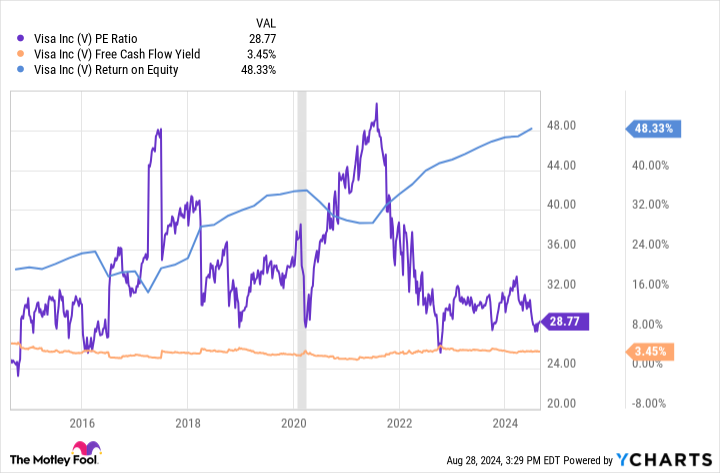MONTRÉAL, Aug. 30, 2024 /CNW/ – The governments of Canada and Quebec are participating in the creation of a fast-track approach to accelerate affordable housing starts across Quebec, with 1,001 units announced today to be built rapidly. The new business model involves providing financial support to affordable housing projects by experienced developer groups recognized for their efficiency by the Société d’habitation du Québec (SHQ).
In concrete terms, the SHQ will grant “Qualified Developer” status to developers or organizations so they can start construction on their projects more quickly. To this end, the SHQ is planning a major administrative streamlining of the “applicant qualification” phase when organizations apply for financial assistance for the construction of affordable housing. Keen to set the process in motion, the SHQ has already identified developers who would be able to obtain qualification status quickly.
“Qualified Developer” status complements the Programme d’habitation abordable Québec (PHAQ). It gives the SHQ more flexibility to get large-scale housing projects built across the province.
The Société de développement Angus: The first Qualified Developer
The Société de développement Angus (SDA) is the first to join the SHQ’s network of qualified developers. It will receive nearly $193.5 million in funding to build 1,001 new housing units: 677 in Montréal and 324 in Rimouski. This financial assistance covers around 50% of the estimated cost of building the units, whose affordability will be guaranteed for a minimum of 35 years.
The funding comes in part from the $900 million in federal funding provided to Quebec through the Canada-Quebec Agreement under the Housing Accelerator Fund (HAF) and the new $900 million in funding announced by Quebec in its fall 2023 economic update. The City of Montréal and the City of Rimouski will contribute to the projects developed on their respective territories. To support the cities in financing their projects, the SDA turned to Desjardins Group, which will provide about $180 million in loans.
Projects in Montreal
In the Technopôle Angus district, located in Rosemont–La Petite-Patrie, a two-building housing project with up to seven storeys will be built in the heart of the Angus eco-district on Molson Street. It will include 352 one-, two- and three-bedroom units. Construction will begin by late 2024.
In Ahuntsic, 325 one-, two- and three-bedroom units will be built. It will be the first residential project of the future Écoquartier Louvain. The eco-district will eventually include an elementary school, childcare centre, library, community centre, multipurpose hall, shops, local services and an urban agriculture centre. Construction will begin by summer 2025.
The housing projects are nationally exemplary in that they aim for LEED certification by offering affordable, sustainable housing based on the highest standards of sustainable development. The aim of these projects is to promote affordable housing as a choice, a desirable and sustainable solution for an excellent quality of life.
Monthly rents will be set based on the grid established by the SHQ in the Programme d’habitation abordable Québec (PHAQ). Tenants could also benefit from the SHQ’s Rent Supplement Program, if they’re eligible, ensuring that they would not spend more than 25% of their income on housing.
The announcement was proudly made today at Locoshop Angus in Montréal by France-Élaine Duranceau, Quebec Minister Responsible for Housing; the Honourable Soraya Martinez Ferrada, Minister of Tourism and Minister responsible for the Economic Development Agency of Canada for the Regions of Quebec; Valérie Plante, Mayor of Montréal; and Christian Yaccarini, President and CEO of the Société de développement Angus.
Quotes:
“In the face of labour shortages and rising construction costs, we must innovate. We need to build affordable housing smarter and faster for Canadians. I’m proud that we’re supporting new and improved approaches by investing in this project through Canada-Quebec Agreement under the Housing Accelerator Fund, in collaboration with the Government of Quebec.”
The Honourable Sean Fraser, Minister of Housing, Infrastructure and Communities
“I continue to repeat that we need more solutions for increasing housing supply, especially when it comes to social and affordable housing. That’s why I’m proud to announce today that we’re broadening our range of solutions with the “Qualified Developer” status. This is a fast track for the rapid construction of quality affordable housing by developers with recognized expertise in housing. I’m confident that this first qualification of its kind, granted to the Société de développement Angus, will prove to be fruitful.”
France-Élaine Duranceau, Quebec Minister Responsible for Housing
“It’s with great pride that our government has contributed to the large-scale and rapid construction of 1,001 affordable housing units through the Canada-Quebec Agreement under the Housing Accelerator Fund. The federal government will continue to work hard toward ensuring that everyone in Quebec and across Canada has a safe and affordable place to call home.”
The Honourable Soraya Martinez Ferrada, Minister of Tourism and Minister responsible for the Economic Development Agency of Canada for the Regions of Quebec and Member of Parliament for Hochelaga
“I’m delighted to see that the work we’re doing to provide better housing for the citizens of Bas-Saint-Laurent is paying off. I’d like to acknowledge how proactive the Société de développement Angus has been in initiating an exemplary project in Rimouski that will provide affordable and sustainable housing and meet an important need in our community.”
Maïté Blanchette Vézina, Quebec Minister of Natural Resources and Forests, Quebec Minister Responsible for the Bas-Saint-Laurent Region and the Gaspésie–Îles-de-la-Madeleine Region and Member of the National Assembly for Rimouski
“Accelerating the construction of social and affordable housing is essential to respond to the housing crisis and provide housing for more Montrealers. Montreal’s selection in this program confirms that the entire metropolitan ecosystem is mobilized to build more, build faster, and protect more existing units. Today’s announcement is a concrete step towards our goal of protecting 20% of units from speculation. As we have done with the application of PL31, the 120-day standard for the granting of a permit and our ambitious real estate strategy that allows us to cede land for projects like these, we will continue to innovate to stimulate construction in Montreal and respond effectively to the housing crisis.”
Valérie Plante, Mayor of Montréal
“This announcement is excellent news for a number of reasons. First, the creation of more than 300 units that will be a major addition to Rimouski’s housing supply and bring us closer to reaching the objectives identified in our plan to reduce the housing shortage. Additionally, this project by the Société de développement Angus will contribute to revitalizing our downtown and allow its residents to enjoy an exceptional living environment on the banks of the river, close to all amenities.”
Guy Caron, Mayor of Rimouski
“At the Société de développement Angus, we’re proud of this collaboration that enables us to build affordable housing units without compromising on quality. In addition to ensuring the development of vibrant, complete and diverse living environments, we’re actively contributing to mitigating the housing crisis and providing sustainable and enriching spaces for our communities.”
Christian Yaccarini, President and CEO, Société de développement Angus
Highlights:
- “Qualified Developer” status
- Projects and developers will be assessed by the Société d’habitation du Québec (SHQ) against a rigorous evaluation grid.
- The goal of this SHQ initiative is to work with organizations that have proven housing expertise, control risk by making sure developers are financially sound and capable of carrying out projects, ensure the long-term financial viability of projects and achieve economies of scale by making each developer responsible for a large number of units.
- For more information, visit the SHQ’s website.
- To ask specific questions about “Qualified Developer” status, email developpeurs.qualifies@shq.gouv.qc.ca.
- The HAF is a $4-billion Government of Canada initiative launched in March 2023 that includes $900 million for Quebec as part of the Canada-Quebec Agreement under the HAF. Its goal is to speed up the construction of 100,000 housing units across the country.
- Quebec also announced $900 million of funding in its November 2023 economic update. Thanks to these combined investments, 8,000 housing units will be built in the coming years.
- The HAF encourages local governments to implement sustainable initiatives that lower barriers to increasing housing supply and approving development projects. Its long-term goal is to generate more housing in Canada.
ABOUT THE SOCIÉTÉ D’HABITATION DU QUÉBEC
As a leader in housing, the SHQ’s mission is to meet the housing needs of Quebecers through its expertise and services to citizens. It does this by providing affordable and low-rental housing and offering a range of assistance programs to support the construction, renovation and adaptation of homes, and access to homeownership.
To find out more about its activities, visit www.habitation.gouv.qc.ca/english.html.
SocietehabitationQuebec
HabitationSHQ
LinkedIn
SOURCE Canada Mortgage and Housing Corporation (CMHC)

 View original content to download multimedia: http://www.newswire.ca/en/releases/archive/August2024/30/c5823.html
View original content to download multimedia: http://www.newswire.ca/en/releases/archive/August2024/30/c5823.html
© 2024 Benzinga.com. Benzinga does not provide investment advice. All rights reserved.























